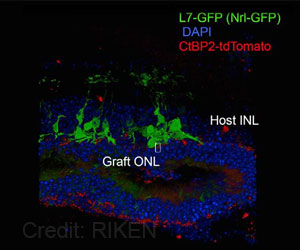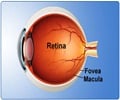The new type of retinal prosthesis uses nanotechnology and wireless electronics to restoring the ability of neurons in the retina to respond to light.

- The performances of retinal prosthesis previously developed in terms of restoring functional vision have been severely limited.
- The new retinal prosthesis uses nanotechnology and wireless electronics to sense light, stimulates the retina and transmits power and data at high speed.
- It will help people suffering from neurodegenerative diseases that affect eyesight, including macular degeneration, retinitis pigmentosa and loss of vision due to diabetes.
TOP INSIGHT
The new high-resolution retinal prosthesis helps to restore vision by restoring the neurons' ability to respond to light.
The performance of previously developed retinal prostheses to help the blind regain functional vision is still severely limited, well under the visual acuity threshold of 20/200 that defines legal blindness.
"We want to create a new class of devices with drastically improved capabilities to help people with impaired vision," said Gabriel A. Silva, one of the senior authors of the work and professor in bioengineering and ophthalmology at UC San Diego.
How it Works
The new prosthesis relies on two groundbreaking technologies.
The other breakthrough is a wireless device that can transmit power and data to the nanowires over the same wireless link at record speed and energy efficiency.
"To restore functional vision, it is critical that the neural interface matches the resolution and sensitivity of the human retina," said Gert Cauwenberghs, a professor of bioengineering at the Jacobs School of Engineering at UC San Diego and the paper’s senior author.
Power is delivered wirelessly to the implant, through an inductive powering telemetry system developed by a team led by Cauwenberghs.
The device is highly energy efficient because it minimizes energy losses in wireless power and data transmission and in the stimulation process.
The researchers successfully tested the device in rats with retinal degeneration.
Researchers plan to further develop and translate the technology into clinical use, with the goal of restoring functional vision in patients with severe retinal degeneration.
"We have made rapid progress with the development of the world’s first nanoengineered retinal prosthesis as a result of the unique partnership we have developed with the team at UC San Diego," said Thorogood, who is the CEO of Nanovision Biosciences.
The findings are published the Journal of Neural Engineering.
Source-Medindia
 MEDINDIA
MEDINDIA




 Email
Email






